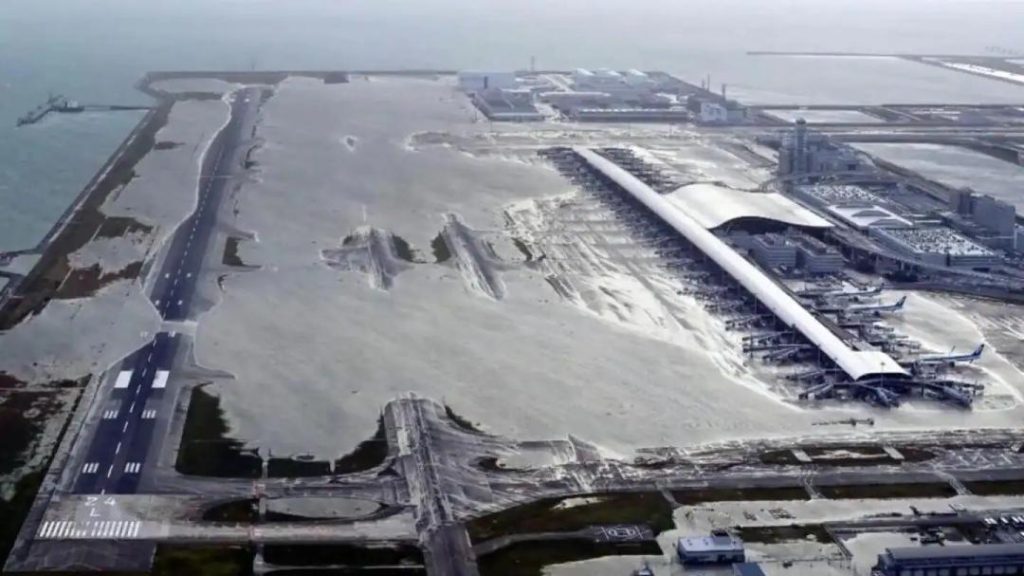
Japan Airport Built on Man-Made Island Sinking into Sea
Located in Osaka Bay, Japan, Kansai International Airport is a major hub for international travel and commerce. However, despite its significance, the airport has been facing a pressing issue – it’s sinking into the sea. The surface of the airport’s first island has dropped by an astonishing 3.8 meters since its opening in 1994, with an average decline of 13.66 meters since landfill began for its construction.
Built on a man-made island consisting of two separate ones, Kansai International Airport was designed to serve as a gateway to the Kansai region, which includes Osaka, Kyoto, and Kobe. The airport’s location in Osaka Bay was chosen due to its proximity to the region’s major cities and its natural harbor. The construction of the airport required the creation of artificial islands, which were built using reclaimed land and rubble from demolished buildings.
However, over the years, the airport has been experiencing subsidence, a process where the ground surface sinks or drops due to natural or human-induced factors. According to the Japan Ministry of Land, Infrastructure, Transport, and Tourism, the subsidence of the airport’s first island has been happening at an alarming rate, with an average decline of 13.66 meters since the construction of the airport began.
The subsidence is attributed to several factors, including the natural settlement of the artificial islands, the weight of the airport’s structures, and the softening of the soil due to the surrounding seawater. Additionally, the airport’s construction process has also contributed to the subsidence, as the landfill used to create the islands is prone to settlement and compaction over time.
The sinking of the airport has raised concerns about its long-term viability and the potential impact on its operations. The airport’s runway and taxiways are already showing signs of damage, with cracks and uneven surfaces becoming more pronounced. Furthermore, the subsidence has also affected the airport’s drainage system, leading to flooding and waterlogging during heavy rainfall.
To address the issue, the airport authorities have implemented various measures to slow down the subsidence. These include installing drainage systems to reduce water pressure, using specialized materials to strengthen the soil, and conducting regular inspections to monitor the airport’s structural integrity.
Despite these efforts, the airport’s future remains uncertain. The subsidence is expected to continue, and the airport’s decline is estimated to accelerate in the coming years. In response, the airport authorities have begun exploring alternative solutions, including the construction of a new runway and the relocation of some airport facilities to higher ground.
The sinking of Kansai International Airport serves as a warning about the importance of proper planning and design in the construction of infrastructure projects. As the world grapples with the challenges of climate change, rising sea levels, and urbanization, it is essential that we prioritize the long-term sustainability of our built environment.
Conclusion:
The sinking of Kansai International Airport is a stark reminder of the importance of careful planning and design in the construction of infrastructure projects. While the airport’s authorities are taking steps to address the issue, the long-term viability of the airport remains uncertain. As we look to the future, it is essential that we prioritize the development of sustainable and resilient infrastructure that can withstand the challenges of a changing world.
Source:






